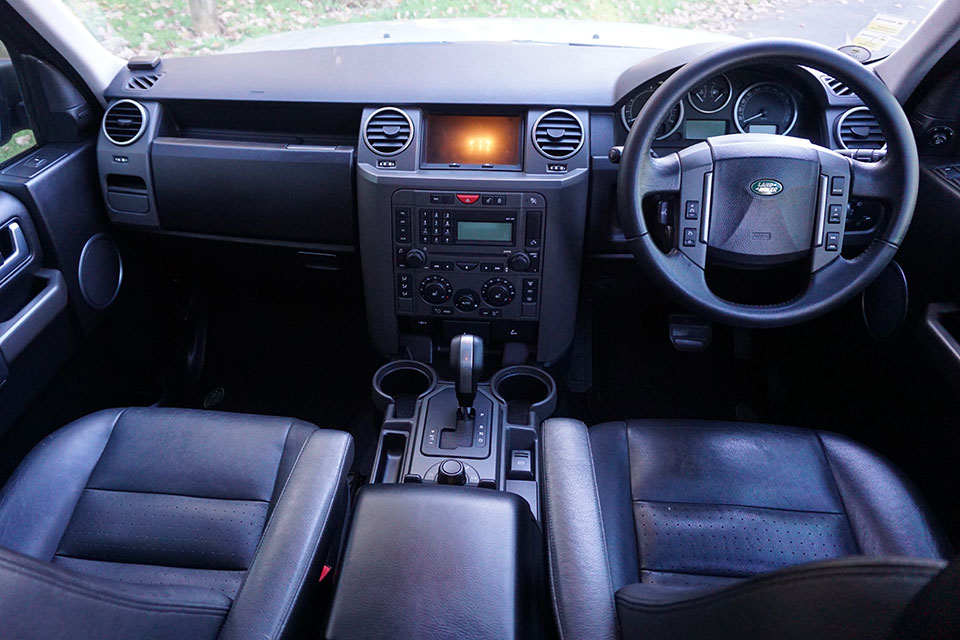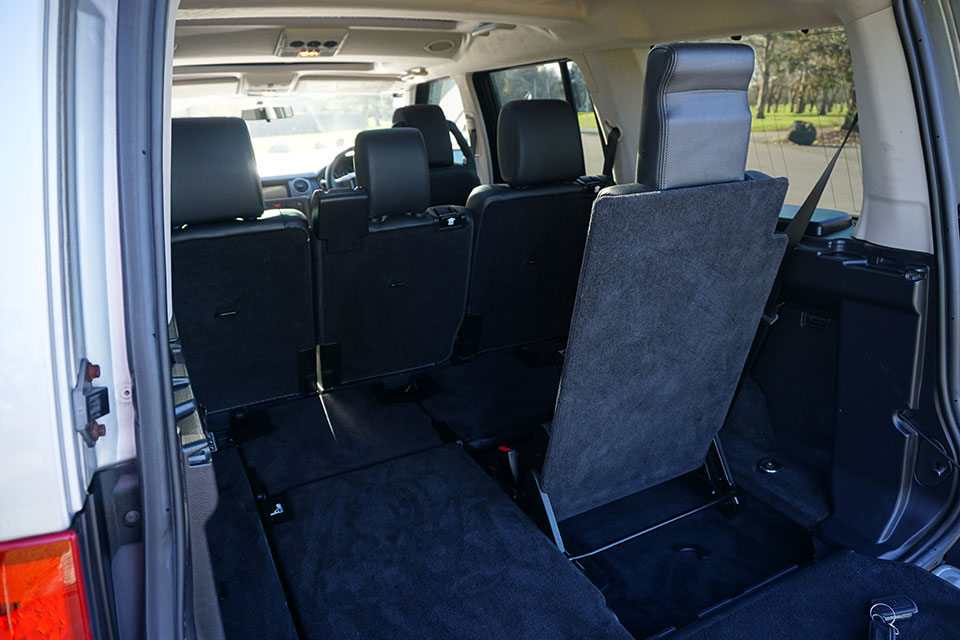Land Rover Discovery 2004-2009 used car review
The Land Rover Discovery is great off the road and is one of the best SUVs around for towing.

The Land Rover Discovery is great off the road and is one of the best SUVs around for towing. It can also seat seven adults in comfort. Prepare for high fuel and maintenance costs.
The Discovery was launched in the late 1980s to fit between the rugged Defender and luxurious Range Rover in Land Rover’s range of off-road vehicles. It developed a reputation for being very competent off the road and comfortable enough for families to use as day-to-day transport. It has been troubled by reliability issues. The third generation model, also known as the Discovery 3 or LR3, was designed to be better on the road. It used a new construction method that combined a car-like ‘unibody’ with a traditional ladder frame.
Inside and out
The Land Rover Discovery has had a very distinctive shape throughout its generations. It is big and square, with a flat front and tail, and a slight step in the roof. The rear door is asymmetrical - the window dips down lower on one side. This is a nod to the first generation, which had a similar window shape to allow for a door-mounted spare tyre. In our review car, the spare tyre is under the floor.
Inside, the interior styling reflects the Land Rover’s off-road ability. There are plenty of grab handles. Knobs and controls are made out of a chunky, durable plastic, including the controls for the stereo and climate control system. This has different settings for the driver and passenger. The dashboard features a touchscreen with satellite navigation. Specialist dealers can update this and the radio for New Zealand maps and frequencies with a software upgrade on import cars.
The seats are excellent with great support and space. In our review vehicle, they are partly covered in quality leather. The driver’s seat is electrically adjustable and both front seats and the window seats in the second row are electrically heated. The middle row is easily capable of carrying three adults with the middle seat almost as big as those on either side. The third-row seats can fold entirely flat into the floor. They are narrow, although legroom is good. This is one of the few SUVs where small adults will be comfortable in this row. Access to the third row is by folding forward the outside rear seat.
With all seven seats in place, boot space is very small - just enough to squeeze in three small suitcases. Fold this row down and space opens up to a massive 1,192 litres, enough for up to six large cases. Fold down the third row and the volume increases to a massive 2,558 litres. The Discovery’s tailgate is split down the middle, allowing you to open just the top half to quickly drop in smaller items. When this is open, the bottom half can be lowered for better access or to provide a flat area to sit or work on - perfect for picnics or watching kids’ sports from the sidelines.
On the road
If you’re buying a New Zealand-new Discovery 3, you have two engine options. Our favourite is a 2.7-litre six-cylinder turbocharged diesel engine. For performance, a 4.4-litre eight-cylinder petrol option is available. All Japanese-import Discoveries, like our review car, use a 4-litre, six-cylinder petrol engine producing 160kW and 360Nm.
This engine, shared with the Ford Explorer, does a good job of powering the car. It is reasonably smooth and not slow – it’s able to run from 0-100kmh in 10.9 seconds. This is good for a vehicle that weighs nearly 3,000kg. The only transmission available with this engine is a six-speed automatic, which is quite smooth and smart-shifting. It can be shifted manually.
The Discovery features all-round independent suspension, which was rare for its time. It also features air suspension that can be raised up or down for either on-road driving - low - or off-road driving - high. Ride comfort is excellent and bumps in the road are soaked up easily. The steering feels light and quite responsive. There is some body roll through the corners, although the car has plenty of grip.
Even on relatively road-orientated tyres, the Discovery is very talented off the road. A flick of the switch lets you put the transmission into a low-range mode, providing slower progress for better traction. The Terrain Response system, controlled through a dial on the centre console, lets you choose modes suited to a range of situations such as snow, grass or rock crawling. The car will automatically set up and control the electronic stability control and differentials for the best performance. The air suspension can raise the vehicle for additional ground clearance.
With no passengers in the third row, the rear window also does an excellent job of allowing the driver to see to the back of the vehicle. Parking sensors are fitted to our SE model. If you park where children are present, you might want to consider adding a reversing camera. Fitting one yourself costs from $50, with professionally installed options starting at $200.
Looking to tow? The Discovery has one of the best tow ratings in the SUV market. It can tow 750kg (unbraked) or a massive 3,500kg (braked), enough to pull a large trailer boat. That’s the same as large commercial utes.
Safety
RightCar does not provide a Used Car Safety Rating for the Discovery; the New Zealand-new models are rated four-stars under the ANCAP system. Standard safety features include electronic stability control, electronic brake force distribution and front, side and curtain airbags.
ISOFIX child seat mounts can be found in the second-row window positions. All seven seats feature full shoulder-style seat belts, which offer more protection than the lap-only type.
Reliability
Land Rovers produced in this era have a poor reputation for issues with their electrical systems and software. These issues are easily tackled by a dealer or specialist workshop, though are common, annoying and expensive. The engines, transmissions and other mechanical components are relatively durable and well built.
Discoveries do require a lot of maintenance. Being a heavy car, they wear out brakes easily. There are reports of regular failure with the electric handbrake system. This causes it to freeze when on and refuse to release, stranding the vehicle where it is. The fix is usually simple – it requires sensors in the rear to be blown clean with compressed air in a workshop and reset. Annoying, yet not necessarily expensive.
The air compressor for the air suspension system can fail. When shopping, make sure that the car can rise and lower when instructed, using the buttons mounted on the centre console. Replacing the compressor can cost up to $4,000.
Other issues to keep an eye out for relate to how the vehicle has lived its life. Check the transmission is shifting smoothly and that there are no signs the car has frequently been used for heavy towing as this can put extra wear on the drivetrain. Check under the car for signs of damage from off-road driving. Plenty of Discoveries on the market have never been used off-road and these are a better option to buy.
The petrol-engined Discovery uses a timing chain which will not require regular replacement. The diesel version has a timing belt and this will need to be replaced at the relatively infrequent rate of every 160,000km.
Cost of ownership
The Land Rover Discovery should be serviced every year or 12,000km. A more frequent schedule is needed if the vehicle is used in “arduous conditions”. A Land Rover specialist quoted $500-$700 for the service, depending on the items that need replacing. The Discovery is a heavy user of brakes and a replacement set of pads and front discs will set you back around $1,300. Diesel models cost $1,000 per service.
It costs over $1,000 more a year to run than a Toyota Land Cruiser Prado with the same size engine. RightCar estimates that over 14,000km of driving a year, it will cost $4,870 to feed. Tow a significant amount and you will be spending even more. The 82-litre tank will cost $164 to fill at $2 per litre. This should take you 440km before the fuel light comes on. The other engines make far better sense for fuel use – the 4.4-litre eight-cylinder option uses $670 less a year and the diesel $2,100 less.
A vehicle licence for the Discovery costs $76.20 a year, with the car in the cheapest ACC levy group.
Trade Me Insurance estimates insurance for a Discovery valued at $15,840 will cost $66.80* per month. This is $15 more than a Toyota Land Cruiser Prado of the same value.
Buyer's guide
This generation of Discovery is available on Trade Me priced from $14,000 to $39,000 for later and lower mileage vehicles. Diesel models tend to fetch at least a few thousand more than the same specification car with a petrol engine.
Variants
- S - Fabric upholstery, steel-sprung suspension, seven seats, climate control air-conditioning, terrain response off-road system, 17-inch alloy wheels, electronic stability control and front, side and curtain airbags and CD player stereo.
- SE - Adds touchscreen with GPS navigation, power-adjustable front seats, parking sensors, 18-inch alloy wheels, air-suspension with height adjustment, front and second row heated seats, running boards, three sunroofs, cruise control and steering wheel controls for the stereo.
- HSE - Adds full leather interior, 19-inch alloy wheels, automatic headlights, automatic wipers, headlights that turn with the steering.
Timeline
- 2004 Launched globally
- 2008 Receives a facelift and upgraded audio system
- 2009 Replaced by updated ‘Discovery 4’ model
Details
2006 Land Rover Discovery SE
$23,000 to $38,000 for models which have travelled 70,000 to 120,000km
4-litre six-cylinder petrol 160kW/360Nm (claimed)
Six-speed automatic, four-wheel drive
Four-star ANCAP
12,000km or 12 months
Full size wheel
17.3-litres per 100km (claimed)
Petrol
4838mm
2022mm
1841mm
750kg (unbraked), 3500kg (braked)
11.5m
This review covers the Land Rover Discovery for model years 2004, 2005, 2006, 2007, 2008 and 2009.
Review vehicle supplied by City Motor Group.
*Our insurance estimates are based on a 35-year-old male with no accidents in the last two years, garaging the car in Mission Bay, Auckland. The car is not used for business and will cover 10,000km to 20,000km a year. We estimate with no option add-ons and $500 excess. Customise your estimate at Trade Me Insurance.
Image gallery
Also consider






